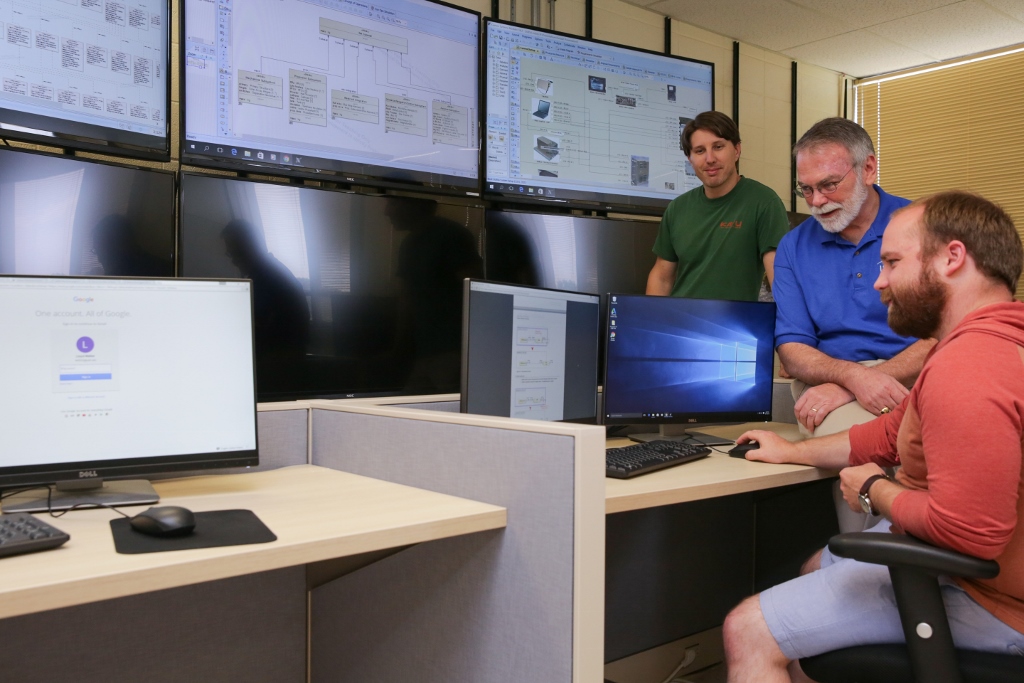Two new labs are being established in conjunction with the Industrial & Systems Engineering and Engineering Management program starting this semester.
The Imagining Engineering Systems (ImagEnS) lab is one-half of a collaborative lab space with the Mechanical and Aerospace Engineering Department. The lab houses research on the theory underlying stakeholder-focused engineering. ISEEM Assistant Professor, Dr. Bryan Mesmer's research focuses particularly on examining preferences in systems engineering. His research team includes graduate and undergraduate researchers:
Giulia Palma (MSE candidate) is studying the link between storytelling and systems engineering, examining communication of preferences. Joseph Clerkin (PhD student) is examining the use of games for incentives and mechanism design in systems engineering, observing and executing preferences. Ian Patterson and Michael Threatt (undergraduate assistants) are working on neural networks with Cobham, one of the largest defense firms in the world. Andrew Gilbert (PhD student) and Alex Clem (MSE candidate) are working with the NASA Systems Engineering Consortium on energy efficiency of rocket and space life-support systems, executing preferences. All of this work, funded by NASA, industry, and internally, is looking forward to a reimagining of systems engineering from a preference perspective.
The Complex Systems Integration Laboratory (CSIL) is a state-of-the-art facility for advanced systems engineering with a focus on Model-Based Systems Engineering research. Spearheaded by Dr. L. Dale Thomas, ISEEM professor and eminent scholar, the lab has already begun assisting the Marshall Space Flight Center (MSFC) with the Iodine Satellite (iSat) spacecraft planned for launch in fall 2017. (The iSat will be the first CubeSat to use Hall thruster technology and iodine as a propellant.) MSFC has tasked CSIL with simulating the mission profile from deployment to activation, integrating several key models for future launch to better understand constraints on starting points.
 “Engineers are good at modeling pieces of a system—electrical power model, propulsion, altitude control—but they don’t have them working together and talking to one another," says Dr. Thomas. "This simulation will let us look at the event sequence in the activation and tie it into an operational scenario. That’s the real power of system modeling language.”
“Engineers are good at modeling pieces of a system—electrical power model, propulsion, altitude control—but they don’t have them working together and talking to one another," says Dr. Thomas. "This simulation will let us look at the event sequence in the activation and tie it into an operational scenario. That’s the real power of system modeling language.”
CSIL has software tools for SysML and Architecture Analysis & Design Language (AADL), languages well suited for modeling tasks. System models can incorporate parametric models developed using Satellite Toolkit and MatLab/SimuLink hosted on the CSIL servers.
Caption: Zach Thomas, Dr. L. Dale Thomas, and Lloyd Walker